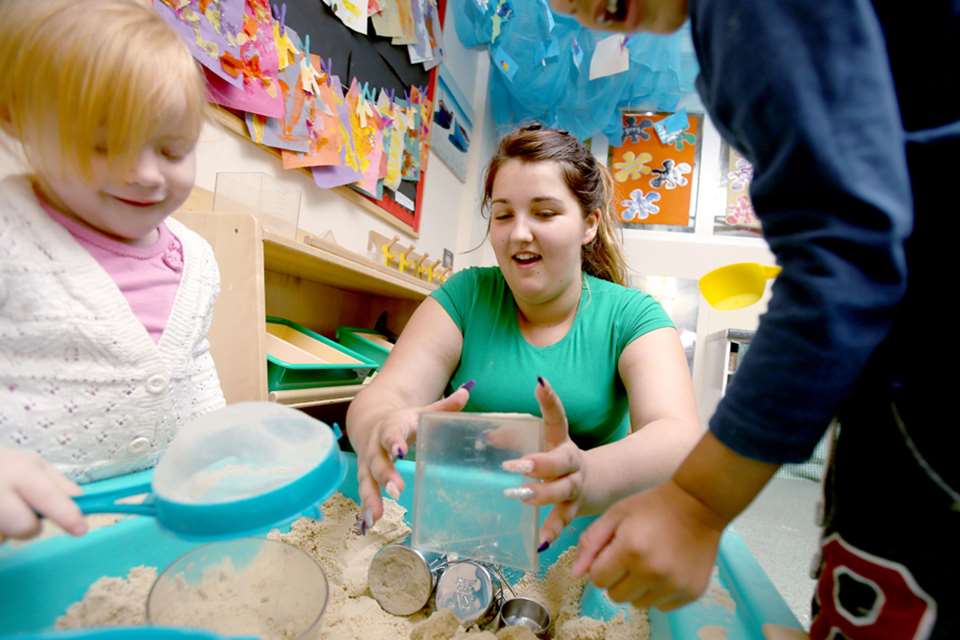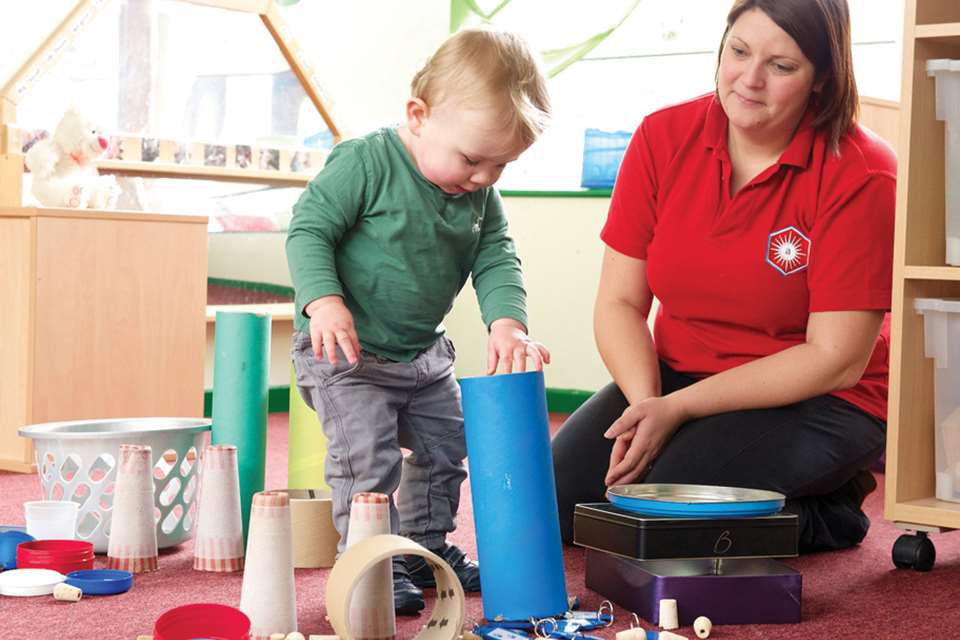Positive Relationships: Behaviour - That’s the limit?
Ruth Thomson
Monday, April 4, 2016
Boundaries, drawing the line, saying ‘no’ – it’s time to disentangle the terms, explains Caroline Vollans

We need to work with them on boundaries’, or ‘There don’t seem to be many boundaries at home’, are phrases used by lots of staff in the early years. The word ‘boundary’ has, over the years, become a commonplace term that is spoken about rather freely, especially when working with children and adolescents.
A boundary is, however, quite a complex idea with precise meanings and applications in various fields, including mathematics, psychology and sociology. Bearing this in mind, it is a thought-provoking development that the notion has come to be spoken of so readily, and casually. We might wonder what exactly we are getting at when we use this term in our work with children.
Setting boundaries is a life skill that has become popularised over the past 30 years by a huge range of self-help books and classes. It is widely used by the counselling profession. In this context, establishing and negotiating personal boundaries is a means of protecting ourselves against having our values and spaces compromised or violated. It is from this particular usage that the concept has become more mainstream, including in work with children and adolescents.
Having boundaries is, in this particular sense of the concept, potentially advantageous to our well-being: it implies that we are ‘within bounds’, held and contained. ‘Out of bounds’, conversely, refers to a violation of this – being without bounds is a state of being that leaves us too vulnerable and exposed to external influences.
Having boundaries also enables us to say ‘no’, to say ‘yes’ and, equally, to have some idea of when to say these things. The application of this particular notion of boundaries would, then, not only be beneficial for young children: it is critical.
Working with young children on establishing and asserting their personal boundaries is extensive and ongoing work. So is helping children to recognise the boundaries of others, and understand external boundaries, such as those of another culture or religion. Indeed, you could argue that this is a life-long project for all of us.
However, I wonder if it is actually work on boundaries that is being referred to when practitioners make comments like those mentioned at the start of this article? Are we really saying that the child needs specific and expert help with their personal boundaries and all that means?
Perhaps what we are, more accurately, saying is that they need limits. We are worrying that they are not used to a line being drawn or being told ‘no’ at home. The concern is that the child seems unable to accept a ‘no’ – they run riot, they are the boss. And, moreover, such behaviour cannot continue in the nursery and something must be done. The problem, it would seem, is one of unacceptable behaviour, not the development of personal boundaries.
LIMITS AND BOUNDARIES
While there is an overlap between ‘limits’ and ‘boundaries’, it seems in such cases that the central issue (and demand for work) is one of needing to set some limits in order to try to modify the child’s behaviour in nursery. Staff are stating that the child needs to know about limits and prohibitions – the line needs to be drawn: they need to know what’s what. The reasons for needing and setting limits are generally well known and agreed upon. To name but a few, they can help to:
- keep children safe (both physically and psychologically)
- stay healthy (limiting their intake of sugar, for instance); and
- develop self-discipline and self-regulation.
Being confronted with age-appropriate limits, too, may cause a child to experience and learn to bear some new and less comfortable feelings.
Many parents and adults working with children avoid this (maybe not wittingly) for fear of making the child feel sad and unhappy, or because they are concerned that it will disturb their good or friendly relationship with the child. So, while it would be hard to disagree with the premise that children need limits, the implementation of them is quite a minefield.
INEVITABLE CONFLICTS
Inevitable conflicts arise between the home and the nursery. A familiar one to practitioners is that of coats on (or not) – when children arrive on cold days without a coat, it can be a struggle to insist that they put it on later in the day. Then there is the issue of playing outdoors in ‘bad weather’ – many parents stop their children from playing outdoors in the rain and cold, and it can seem odd that this limit isn’t imposed in nursery. Messy play may be a nightmare to some parents, but it is judged to be vital for child development in nursery.
Sharing is another controversial issue – many parents insist on the sharing of toys at home, but in nursery it may be judged that it is acceptable for a child to play on their own with resources until they can be helped to feel secure enough and ready to share with others.
When clashes such as this arise, it beckons us to call into question and reflect upon the limits we set or want to set – are they valid, are they actually necessary and beneficial? Or do we impose a limit for the sake of a limit? We need to assess their real function and purpose. Such conflicts demand work among the staff and with the children and their parents. All involved need the ability to reflect, negotiate and compromise – this is the nature of setting a limit.
In thinking about all of these things, it could be useful to bear in mind that there is no ‘natural’ or given way of bringing up children – limits are culturally determined. Early years practitioners by tradition promote outdoor and messy play – but not every family feels the same, and in some cultures the very idea of ‘learning through play’ is unfamiliar.
A DIRTY WORD
The problem of agreeing and setting limits has been made even more complex because, in recent years, the word ‘no’ seems to have become seen as almost a dirty word. It is seen as too negative, overly authoritative, unnecessarily confrontational, and its very use has been questioned. It is no longer rare, in fact, for schools and nursery settings to go so far as to ban staff from using the word – practitioners are forbidden from saying no to a child. They are prohibited from asserting a prohibition.
Of course, there are those less direct ways of imposing or negotiating a limit – you do not actually have to say ‘no’. For example, you can state what is required positively: ‘Let us listen very carefully’, as opposed to saying, ‘No talking.’ Or you can re-direct a no: ‘Can I have some sweets?’ may be responded to with, ‘You can have some fruit.’ Undoubtedly, these are useful and effective strategies. A side-effect of this, too, is that if ‘no’ is used more sparingly, it carries more weight – it stops being an empty refrain.
It is certainly worth giving consideration to our practice regarding how we use a ‘no’ and how often we say it: otherwise we could end up saying ‘no’ a million times a day, and it is probably best not to. But it may be also worth asking if ‘no’ really is such an undesirable word.
Used properly, when it is said and meant, it has the benefit of being short, unequivocal and clear – interestingly, young children are most adept at using the word and it tends to feature in their vocabulary far more than ‘yes’. ‘No’, it would appear, is a most necessary word for them. It doesn’t seem to have happened yet that children have been banned from using the word!
CATCH-ALL TERM
Boundaries are something that early years practitioners should, of course, be taking seriously, and helping a child to understand boundaries is an important and long-term endeavour from the early years and all the way through schooling. But, could it be that the word ‘boundaries’ has become a catch-all term, a more acceptable-sounding way of referring to limits or saying ‘no’?
The danger of this is that both the particular issue at hand and the issue of boundaries can become blurred. We need to be clear in our own minds what it is exactly that the child needs – if it is something to do with boundaries, then we need to think through what needs working on. But, if limits are the issue, then we need to think about something more immediate and short term – what are the limits at stake and how will we go about setting them and negotiating them in an age-appropriate way? If saying ‘no’ is the main issue, then what is it about a ‘no’ that we want to approach, and so on.
Whatever the work, using a broad range of terms and concepts – thinking about whether we mean setting limits, saying ‘no’, or establishing boundaries – should help us clarify what we want to work on. If we are precise in our terms and concepts, then we can communicate clearly with children and parents. Separating out the terms so that we can have some direction with our work can only be a useful thing.
[asset_library_tag 1147,Download the PDF]








